The 20 Highest-Grossing Movies of 2021
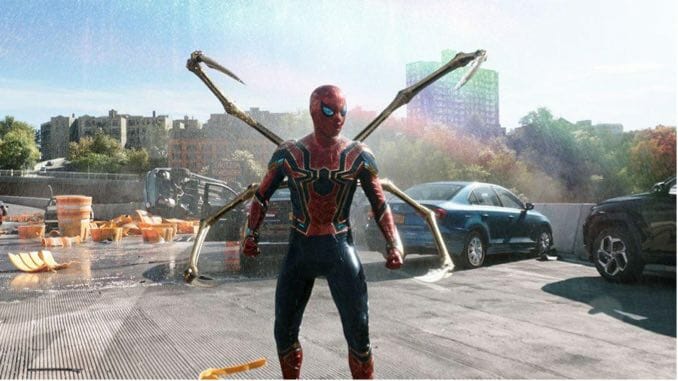
With Marvel movies taking up a quarter of the entire domestic box office this year, superheroes once again were good for business. Nine of the top 10 highest-grossing movies of 2021 in the U.S. were either sequels or part of a larger franchise. Kudos to Free Guy for at least coming up with something new.
The global picture was completely different with two Chinese films that weren’t even released here (The Battle at Lake Changjin and Hi, Mom) beating out everything but the latest Spider-Man.
If you want the best movies of 2021, go here, but if you want to know what the biggest films of the year were—at least in America—here are the 20 highest-grossing movies of 2021.
1. Spider-Man: No Way Home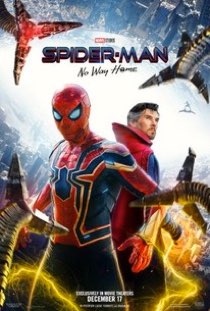 US Box Office: $573 million
US Box Office: $573 million
Director: Jon Watts
Stars: Tom Holland, Tobey Maguire, Andrew Garfield, Zendaya, Benedict Cumberbatch, Jacob Batalon, Jon Favreau, Marisa Tomei
Rating: PG-13
Now Playing in Theaters
Spider-Man: No Way Home holds no surprises. It delivers what’s expected and whether you cry “spoilers” or not, you likely already know exactly what I mean. That’s what the film is hoping for, as its premise—that Peter Parker (Tom Holland) has come so far from his enjoyably low-key Homecoming, his secret identity known thanks to Far From Home, that he must literally toy with fate spanning far beyond his own universe—assumes its audience has a working knowledge and appreciation of two decades of Spider-Man cinema. The multiverse, which supplemented the Oscar-winning Spider-Man: Into the Spider-Verse origin story with explosive animated verve, is the only force at work here. It is a massive fan servicing crossover, with the MCU bringing staggeringly little to the fold like a potluck mooch. It is a metatextual collage, which often overshadows the actual text—it’s easy to miss the movie for the Easter eggs. No Way Home is an intriguing case study of corporate collaboration, a self-aware meme machine, and a lackluster movie that understands its hero so well that the disservice stings all the greater. What director Jon Watts’ trilogy has done better than its Raimi and Webb counterparts is convince us that Peter Parker is a kid. A nervous, charming goodie-goodie with a headful of knowledge and not a lick of sense. So it fits that when he, his girlfriend MJ (Zendaya) and BFF Ned (Jacob Batalon) face problems—blown out of proportion by crippling cases of teen-brain—he’d run off to Dr. Strange (Benedict Cumberbatch) and plead for a magical worldwide memory wipe without really considering consequences or alternatives. What follows, with characters from past Spidey films getting interdimensionally sucked to this NYC, only really makes sense if you’ve been keeping a keen eye on casting rumors. If so, congratulations: They’re here and shenanigans ensue. If you don’t really care about a fan-fictional Spidey Greatest Hits parade, there’s some other stuff in the movie (it continues trying to convince us that Marisa Tomei’s May and Jon Favreau’s Happy were anything but a long and bad running joke; it lightly engages with bad journalism’s shift from tabloids to InfoWars) but you can tell it’s mostly ceremonial. Spider-Man: No Way Home’s routine is overwhelmed with flourishes, more devoted to Spider-Man™ than its Spider-Man. But it sticks the landing. It’s not that it’s without the MCU’s required final act CG spectacular, but that said spectacular is followed by an excellent denouement, subtly written and acted in turn by performers who’ve waited years to actually act with each other. After so long playing with the legacy and impact of Spider-Man, No Way Home finds its way back. All the spectacle, all the stunt performers and stunt casting—it all evaporates like so many Snapped extras when confronted with small, connected scenes of human-level dramatic filmmaking that remind you why broke loser Peter Parker resonates with us so deeply in the first place. It’s valuable, this recollection, but getting back to Spider-Man basics is a shallow victory with diminished returns. Perhaps the fact that Spider-Man: No Way Home finds any success in this familiar territory, after devoting itself so wholly to unwieldly examinations of its own IP, is itself its biggest surprise. —Jacob Oller
2. Shang-Chi and the Legend of the Ten Rings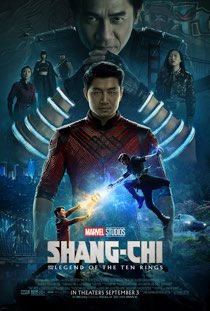 US Box Office: $225 million
US Box Office: $225 million
Director: Destin Daniel Cretton
Stars: Simu Liu, Awkwafina, Meng’er Zhang, Fala Chen, Florian Munteanu, Benedict Wong, Michelle Yeoh, Tony Leung, Ben Kingsley
Rating: PG-13
Delayed by and filmed throughout the pandemic, filmmaker Destin Daniel Cretton’s sprawling and intangible martial arts journey wears its rich influences openly, treats its supporting cast reverently and dilutes it all predictably. Despite hints of the interpersonal nuance Cretton brought to his indie work (best seen in 2013’s Short Term 12) lurking in a bulky script, recognizable elements of Asian action cinema struggling for breath under countless layers of digital sediment and one of our greatest living actors working wonders as its villain, Shang-Chi is as bland and busy as its title. Poor Simu Liu never had a chance. Every character is more interesting than the actor’s Shang-Chi, who’s a straight man foil to the world around him. He is the sweet-faced stoic to Awkwafina’s Katy (his rambling, riffing, spotlight-stealing comic relief pal) and—as is implied through countless flashbacks and, naturally, a long opening Legend—the allegedly brooding center of the film’s themes of identity and inheritance. But the San Franciscan valet with the heart of gold, single-digit body fat, and secret, mythical family history has a personality akin to circling a lot looking for parking. He is a vehicle for plot to drive around, picking up more interesting characters (Ben Kingsley’s faux Mandarin; Benedict Wong’s Wong) along its extended roadtrip. That’s because, really, this isn’t Shang-Chi’s movie at all. It’s the movie of his father, Tony Leung’s Wenwu AKA The Mandarin. Not only is his character arc the only compelling one of the film and not only is Leung an ultra-charismatic master at handsome mystique, but he’s the essential force of the unwieldy story. That frustration especially chafes because of how clearly Shang-Chi desires to inject a cultural and personal uniqueness into its fantasy template. The idea that someone must wrestle with familial expectations, the desire to be one’s own person and the inherent influence upon that person by those that came before them is a compelling inner struggle—one that could have special resonance for Asian Americans. But with only the vaguest of gestures towards this deeper emotional conflict—not helped by a main character who’s only got that title because his name is in the movie’s—it’s drowned in an overload of particle effects and Easter eggs. Shang-Chi’s a long and often sidetracked movie so, if you’re inclined, there’s plenty of time to find these threads and pull them, hoping not to unravel anything but to find something meaningful at their ends. That the threads exist at all hints that Cretton or one of his two co-writers attempted this specificity—in addition to their casting choices, karaoke scenes and nods to understanding (but not really speaking) a parent’s language—but that their ambitions were either incompatible with or swallowed up by the needs of a wide-ranging origin story with its eyes squarely on a boardroom flowchart’s future.—Jacob Oller
3. Venom: Let There Be Carnage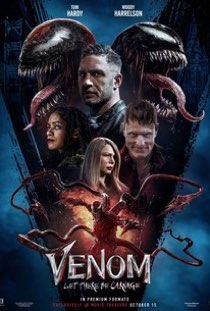 US Box Office: $213 million
US Box Office: $213 million
Director: Andy Serkis
Stars: Tom Hardy, Michelle Williams, Naomie Harris, Reid Scott, Stephen Graham, Woody Harrelson
Rating: PG-13
Available on Demand
Just as it felt like the box office may never recover, one film rose from the goo to save movie-going. Venom: Let There Be Carnage is a silly, self-aware and just straight up fun movie. The Andy Serkis-directed sequel leaned into the best parts of the original and made a film that abandoned any hope of being serious. Tom Hardy has mastered the art of wacky voices and has such good chemistry with himself you hardly want the plot to continue. And yet Woody Harrelson and Naomi Harris fit perfectly into the strange world of Venom: Let There Be Carnage with their cartoonish and maniacal villains that embrace the comic part of a comic book movie. Wrap all the insanity into a narrative about the power of love and accepting your alien/host for the person they are, and you have a romp of pure delight. Still on the fence? How about a tight 97-minute runtime and a stellar scene where Venom goes to an underground rave and is welcomed into the community (yes with EDM music and glowsticks abound)?—Leila Jordan
4. Black Widow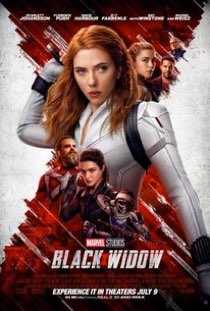 US Box Office: $184 million
US Box Office: $184 million
Director: Cate Shortland
Stars: Florence Pugh, Scarlett Johansson, Rachel Weisz, David Harbour, O-T Fagbenle, William Hurt, Ray Winstone
Rating: PG-13
In many ways, Black Widow is a peculiar film, simultaneously relic and preface, an epilogue that occurs before the story ends, and, with Florence Pugh’s Yelena Belova, an introduction of another piece of the post-Phase 4 MCU. It seems unlikely Black Widow was ever envisioned as more than a coda to the grand finale of Endgame, one that set up a baton exchange between Widows while doing what MCU movies do best—print box office money for the Mouse. Yet in other ways, especially as relates to its genre-specific weaknesses, Black Widow is all too familiar. Director Cate Shortland tries to leaven this particular loaf o’ unacknowledged concussions, fractures and tissue damage with family drama and trauma. Flashbacks and present action introduce Rachel Weisz as Melina Vostokoff and David Harbour as the single traditionally superpowered character in the movie, Alexei Shostakov (a.k.a., the Red Guardian). Beyond the general joy of seeing Weisz in another comic book adaptation, these scenes work well initially—the flashbacks and jailbreak in particular—but as the scope of the current crisis, and the role of Weisz’s character in it, is revealed, the jokes don’t so much land as disappear down a bottomless pit. (I haven’t seen a more morally imbalanced/unearned “plot pass” given to a character since Mirage in The Incredibles.) So what is there to be excited about with Black Widow? Pugh’s Black Widow, whether she arrives via Thunderbolts, Avengers 2.0 or by other means, is Florence Pugh—no matter how light in calories, Pugh delivers like it’s a steak dinner (and it’s difficult to overstate how crucial that is to pulp fare).—Michael Burgin
5. F9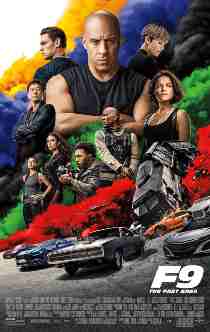 US Box Office: $173 million
US Box Office: $173 million
Director: Justin Lin
Stars: Vin Diesel, Michelle Rodriguez, Tyrese Gibson, Ludacris, John Cena, Nathalie Emmanuel, Jordana Brewster, Sung Kang, Charlize Theron
Rating: PG-13
Runtime: 143 minutes
Available on Demand
This latest entry marks the return of director Justin Lin, who helped guide the series’ evolution from Tokyo Drift to Fast & Furious 6, and while he struggles with how unwieldy F&F has become, his undeniable understanding of what makes these movies tick keeps the film roaring along. Lin’s still adding new characters and twists to this high-octane telenovela as often as prefixes, retconning deaths and introducing long-lost brothers as easily as he moves from simply defying physics to defying astrophysics—as easily as he turned street-racing spies into globe-trotting superspies. The crew, including the newly domestic Dom and Letty, is pulled back into the world of…whatever it is they do…once again and their impossible mission (which they always choose to accept) has to do with another globally destructive techno-MacGuffin and a globally destructive flesh-MacGuffin: Dom’s younger brother Jakob (John Cena), excommunicated from the family for sins that become apparent over the course of extensive flashbacks. As Dom’s uneasy relationship with Jakob becomes clear—over the course of explosion-laden jungle races, rooftop chases and posh sitting room brawls—F9’s knowing relationship with its own cartoonishness balances it out. One of the funniest gags sees Tyrese Gibson’s Roman openly speculating if he and the rest of the crew have plot armor. Are they actually invincible? The gang realizing that they’re all in a movie seems like it could honestly be the next step, with them turning their cars towards the camera and bursting out of the fiction like Daffy Duck in Duck Amuck. While both come too late in the film for my taste (leaving much of the film hanging on how pleased you get seeing the admittedly amusing returns of Sung Kang and Lucas Black), two innovations keep F9 on the cutting edge of ridiculous action: Magnets and rockets. But such winning ideas, timed as they are to energize a relatively dramatic entry like last-minute nitro boosts, have a hard time standing out amidst the meandering plot and the narrative’s bevy of cameos. Perhaps the most telling way in which you can tell that F9’s action is a little underwhelming is that the standout moment from the film is purely dramatic. A shockingly well-directed “life flashing before your eyes” sequence allows Diesel to undersell a bevy of emotions through little more than a lemon-pursed mouth, while Lin spins his past, present and future around him. It’s not a great standalone entry into the Fast canon, but as the franchise speeds towards its finish line, it’s still satisfying to know that it’s in the hands of someone well-versed in the series’ strengths and still willing to imagine new ways to crash its toys into each other.—Jacob Oller
6. Eternals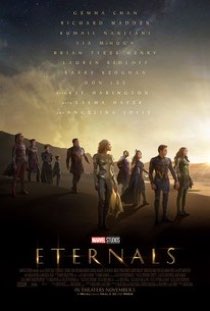 US Box Office: $165 million
US Box Office: $165 million
Director: Chloé Zhao
Stars: Gemma Chan, Richard Madden, Kumail Nanjiani, Lia McHugh, Brian Tyree Henry, Lauren Ridloff, Barry Keoghan, Don Lee, Harish Patel, Kit Harington, Salma Hayek, Angelina Jolie
Rating: PG-13
Chloé Zhao’s Eternals is not a film that frustrates because it misses an obvious target, plunges down the wrong path or even mangles the source material. In fact, it doesn’t really frustrate at all. Instead, it just kinda … occupies time? Oh, plenty of things happen, but, weighed down by 11 or so narrative arcs of mostly “bland new” superheroes—creator Jack Kirby’s signature style and energy is mostly absent—while also dutifully doling out a millennia-spanning, massively predictable larger plot, Eternals never really feels that connected to the greater MCU. Instead, it feels like a well-shot but rather densely packed educational film on some other comic universe, one filled with off-brand heroes and the usual array of power sets. If Eternals had merely been an enjoyable ensemble one-off—an Ocean’s Eleven or Knives Out of the MCU’s very own!—that could have been delightful. But there’s no real magic, Marvel or otherwise, happening here. Eternals is unlikely to leave audiences wanting more (or remembering much), though it may well whet the appetite for the day when the Fantastic Four and X-Men finally arrive.—Michael Burgin
7. No Time To Die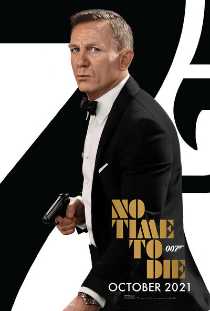 US Box Office: $161 million
US Box Office: $161 million
Director:Cary Joji Fukunaga
Stars: Daniel Craig, Lea Seydoux, Rami Malek, Ben Whishaw, Lashana Lynch, Naomie Harris, Ralph Fiennes, Jeffrey Wright, Ana de Armas, Christoph Waltz
Rating: PG-13
Available on Demand
It’s telling that Craig’s swan song No Time to Die being the longest Bond ever, at a superhero-sized 163 minutes, probably won’t inspire as much public self-flagellation as the leaner, meaner Quantum. No Time to Die is neither lean nor mean; it’s a hard-working attempt to reconcile the Bond rituals with a series-finale emotional weight that these movies have been accumulating (with mixed success) since 2006. Apparently, that reconciliation process takes time: Director Cary Joji Fukunaga (or, more likely, Eon Productions, the tight-gripped caretakers of the Bond franchise) is so unwilling to drop either aspect of this opus that it often feels like two movies in one, both feature-length. So pronounced is the movie’s two-track approach that many of its story elements feel doubled: The opening sequence is a bit of creepy, horror-tinged backstory for Lea Seydoux’s Madeleine Swann (first introduced in the half-lackluster Spectre) and a big Bond action sequence jostling him out of retirement. It feels like 30 minutes before the opening titles finally roll. Then, after those credits, it’s five years later, and the movie gives us a whole other Bond retirement, this time in Jamaica rather than Italy. If it seems like the characters, locations and plot turns keep on coming, and that it’s impossible to keep from mentioning the other Craig Bonds that have preceded it, that’s very much the experience of watching No Time to Die—and not always unpleasantly. If you can accept a saga-fication of Bond, with callbacks and plot threads and interconnections, it’s, at minimum, less of a Forever Franchise than the endlessly self-teasing superhero mythologies (ironic, given that this is the most forever of franchises). This movie really does want to tie the extended Craig era—longest in years, though not in total output—together. Despite the craft on display, No Time to Die lacks pantheon-level Bond action sequences. Cuba is terrific fun, Fukunaga stages a solid late-movie one-take stairwell fight and the big/delayed opener delivers. But the movie is more concerned with the human stuff, a decision that’s by turns hubristic, heartening and unprecedented. (Well, not entirely. On Her Majesty’s Secret Service tried something different, and the filmmakers show their belated appreciation for that once-maligned Bond classic here.) The emotional weight it’s trying to foist onto its loyal audience doesn’t always feel earned, just because it’s tricky to parse what, if anything, the movie is actually trying to say about a James Bond who has spent the majority of five movies beginning and ending, sometimes on a loop. Yet fans may welcome the chance to watch the series struggle against its conventions: Are these performances good, for example, or are all the good guys just beautiful? Is this movie visually sumptuous or was it just shot on film? Has James Bond been deepened, or just weathered? As neatly as No Time to Die wraps up, its certainty is ultimately limited to the last line of the credits: James Bond Will Return. How is another question altogether.—Jesse Hassenger
8. A Quiet Place Part II
US Box Office: $160 million
Director: John Krasinski
Stars: Emily Blunt, Cillian Murphy, Millicent Simmonds, Noah Jupe, Djimon Hounsou, John Krasinski
Rating: PG-13
Runtime: 97 minutes
Serving as both prologue and epilogue to the original film, flashing back to the day the sound-averse killer aliens landed on Earth, A Quiet Place Part II is an exercise in diminishing returns. But thanks to the strengths of its core ensemble and returning director John Krasinski’s ability behind the camera, A Quiet Place Part II’s technical merits mostly drown out the franchise’s increasingly noisy flaws. Picking up directly after the first film, the surviving Abbott family—Evelyn (Emily Blunt), Marcus (Noah Jupe), Regan (Millicent Simmonds) and a nameless newborn—mourn the sacrifice of patriarch Lee (Krasinski) by abandoning their somewhat busted, partially ablaze post-apocalyptic compound in search of a mysterious bonfire they spot on the horizon. They’ve gotten pretty good at dealing with these monsters thanks to the discovery that they hate the frequency produced by Regan’s cochlear implant—though with that baby in tow and their home apparently no longer inhabitable (for some reason), the family’s clearly in need of a more permanent solution. Not only are the film’s actors so good that they sell ridiculous ideas or freshen familiar situations—Simmonds is still a standout, at once the most expressive and grounded of the group, while Murphy shifts with a dying animal’s dangerous melancholy—Krasinski understands how to play to their physicality, keeping a tight focus on small actions and their potentially large consequences. Yes, people are once again taking very slow footsteps. But when he’s telling stories through these silent, zeroed-in processes, climbing through a window can be far more compelling than an alien barreling through a train car. These sequences are the intimate, often breath-holding culminations of Krasinski’s audiovisual talents, which are showcased in the flashback scene in which he appears. Fittingly, it’s also the best scene in the movie. That leaves A Quiet Place Part II to be a charmingly unambitious, ultimately enjoyable step down of a sequel: A controlled expansion where novelty fades to reveal technical prowess and contempt starts peeking out behind familiarity.—Jacob Oller
9. Ghostbusters: Afterlife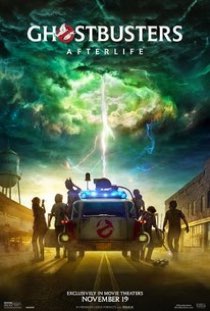 US Box Office: $122 million
US Box Office: $122 million
Director: Jason Reitman
Stars: Carrie Coon, Finn Wolfhard, McKenna Grace, Paul Rudd, Logan Kim
Rating:PG-13
Now Playing in Theaters
If I had to guess that Ghostbusters: Afterlife will end up gifting anything lasting to contemporary cinema, it will be as an unequivocal litmus test for what kind of moviegoer you are: One who appreciates a tsunami of callbacks from a much better film cobbled together into some semblance of something, or as someone who begs for an exit strategy from any nostalgia onslaught that completely takes over after the first act. I’m in the latter camp, as someone who desperately hoped to receive a fresh installment of Ghostbusters mythology that might rival the comedic/supernatural genius that almost 40 years ago birthed into existence Gozer the Gozerian, The Stay-Puft Marshmallow Man, terror dogs, and the concept of crossing the streams. As a kid, I remember sitting in a darkened summer theater witnessing what felt like my first grown-up comedy where the jokes were so great, you missed a lot of the dialogue amidst the roars of laughter. Sadly, Ghostbusters: Afterlife is not our savior. And to add insult to injury, writer/director Jason Reitman dangles the carrot of a fun and exceptionally cast sequel that was ready to stand on its own merits until the nostalgia itch got so bad, he had to unleash the beast which, like Slimer in that hotel hallway, devours everything original in its path. Positioned as a direct sequel to Ghostbusters II, set 30 years after the supernatural events of that film, Ghostbusters: Afterlife opens with a prologue that sets up a spectral disturbance centering on a rural farmhouse protected by strange scientific gadgetry that seems to be the work of a shadowy man with Dr. Egon Spengler’s silhouette. But he’s overcome by that supernatural entity, and whatever he captured in a familiar Ghostbusters trap is lost under a tattered chair that also looks oddly familiar. But whatever promising story teased in the first act is lost. Perhaps most egregious is that Reitman betrays his new cast by sidelining them for returning faces and a ridiculously maudlin climax that makes Ghostbusters II’s Statue of Liberty bit look emotionally tempered in comparison. I can’t remember another movie throwing such a competent cast under a bus so badly. How they turn out and how they could continue in the mythology is just iced in service of a reunion that doesn’t land, coupled with a ghoulish use of technology that is downright uncomfortable to watch. Let me add that the movie isn’t even given a proper ending. It’s more of an abrupt shoulder shrug that rolls into three non sequitur credit scenes that confirmed for me that if I ever feel the need to recapture my love of Ghostbusters, I’ll just re-watch the untarnished original. —Tara Bennett
10. Free Guy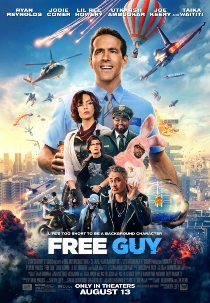 US Box Office: $122 million
US Box Office: $122 million
Director: Shawn Levy
Stars: Ryan Reynolds, Jodie Comer, Lil Rel Howery, Utkarsh Ambudkar, Joe Keery, Taika Waititi
Rating: PG-13
It probably says something about the superheroicized state of big-budget entertainment that some movies have turned to videogames to find avatars of genuine human emotion. Guy (Ryan Reynolds), the non-human at the center of Free Guy, is essentially a cross between the two leading pixels-with-feelings from parent company Disney’s Wreck-It Ralph: Like Ralph, Guy is a videogame character who starts to feel stirrings of dissatisfaction in his programmed role, and like young racer Vanellope, he’s also a glitch in the system that threatens to bring the whole game down with him. As a citizen of Free City, sort of a massive-multiplayer Grand Theft Auto, Guy’s job is to walk through the action, stumble across the paths of the actual players, and regularly get killed and reset. When he catches sight of Molotov Girl (Jodie Comer), he doesn’t realize that she has a human in another world controlling her impeccably styled action moves—and certainly doesn’t understand that her human controller is an idealistic game designer named Millie (also Comer). He only knows that he no longer wants to get knocked through the digital shrapnel at will. He wants to go where she goes, which means experimenting with a level of freedom heretofore unavailable to his routine background life. Having Reynolds play a revolutionary figure in the field of artificial intelligence with the innocence of an awkward middle-schooler who doesn’t yet understand not to repeat the jokes he overhears from mean-spirited gamers is funny—and the movie can’t wait to skip over the funny stuff in order to use Guy as a vehicle for lessons in real-world self-actualization. Reynolds, as ever, seems both happy to be there and faintly self-mocking about his never-ending quest for validation. A better movie could tease out that tension, or allow its star to unravel a little, rather than just get knocked around. Free Guy is too busy mashing buttons. —Jesse Hassenger
-

-

-

-

-

-

-

-

-

-

-

-

-

-

-

-

-

-

-

-

-

-

-

-

-

-

-

-

-

-

-

-

-

-

-

-

-

-

-

-

 US Box Office: $117 million
US Box Office: $117 million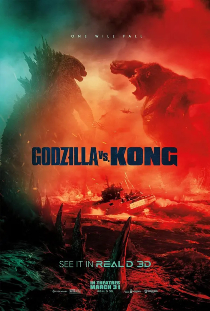 US Box Office: $99 million
US Box Office: $99 million US Box Office: $93 million
US Box Office: $93 million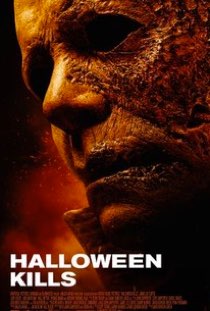 US Box Office: $92 million
US Box Office: $92 million US Box Office: $91 million
US Box Office: $91 million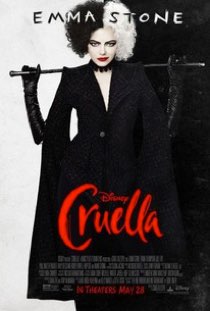 US Box Office: $86 million
US Box Office: $86 million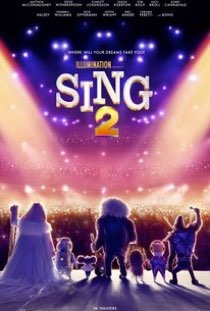 US Box Office: $75 million
US Box Office: $75 million US Box Office: $67 million
US Box Office: $67 million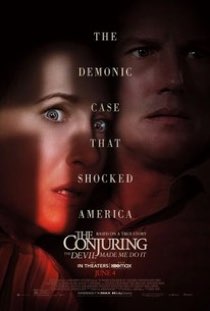 US Box Office: $66 million
US Box Office: $66 million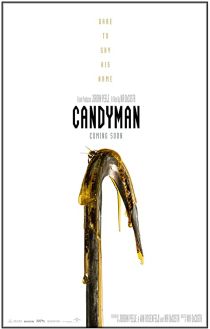 US Box Office: $61 million
US Box Office: $61 million






































